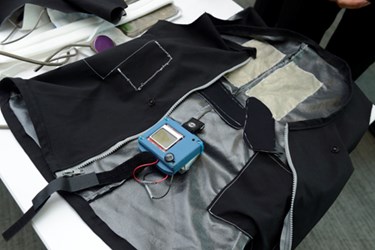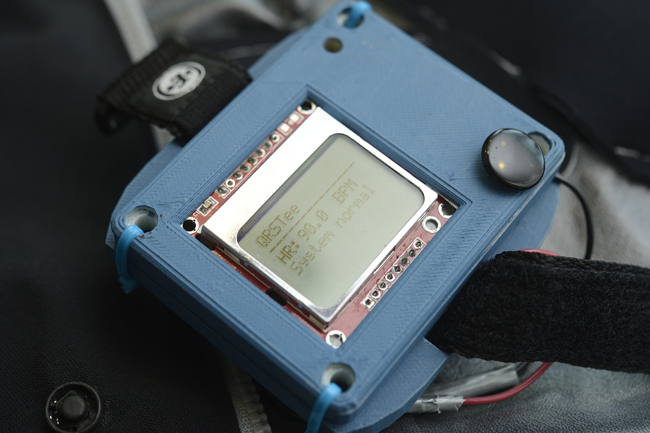Shocking Shirt: New Wearable Defibrillator Design Improves Patient Compliance
By Joel Lindsey

A team of undergraduate researchers at Johns Hopkins University has designed a wearable defibrillator device that could help improve patient compliance and provide a more effective mode of monitoring and treating those at risk of sudden cardiac arrest.
The new device uses a concept similar to other wearable defibrillators already on the market, but the researchers have redesigned it in an attempt to make a more user-friendly garment.
“In two studies, up to 20 percent of patients who received the defibrillator garment that’s already available did not keep it on all the time because of comfort and appearance issues, problems sleeping in it, and frequent ‘maintenance alarms,’ which occur when the device does not get a good signal from sensors on the patient’s skin,” Sandya Subramanian, a Johns Hopkins student involved with the project, said in a press release published recently on the university’s website. “For our class project, we set out to address these issues and design a device that heart patients would be more likely to wear for longer periods of time — because their lives may depend on it.”
The new wearable device can be worn like a vest, and is made out of a thin, breathable, and stretchable fabric that researchers say could be more comfortable to wear than more traditional wearable defibrillators.
Worn beneath a patient’s clothing, the vest includes electrical components designed to detect arrhythmia and can deliver a 200 joule shock to stop the wearer from going into cardiac arrest. The device also features a wireless control panel, designed to be worn like a wristwatch, that gives wearers 30 seconds to stop the shock in the event of a false alarm.

“We did not change any of the science involving how a wearable defibrillator works,” said research team member Melinda Chen. “We just changed the form of the device. We pursued a ‘slip-on and forget’ approach to minimize the user’s need to maintain and interact with the device.”
According to the press release, the students have showcased the new device at a number of conferences and design competitions, where it has received a great deal of attention. In particular, the prototype device won a $10,000 prize in a competition sponsored by the North American Professionals and Entrepreneurs Council. It was also well-received by physicians, researchers, and medical device manufacturers at Stanford’s Biodesign Conference.

Image Credit: Will Kirk/homewoodphoto.jhu.edu
